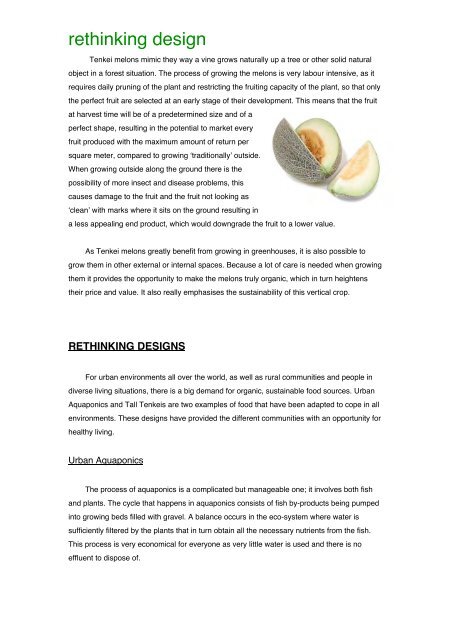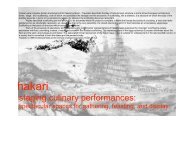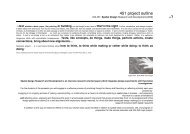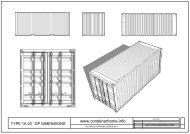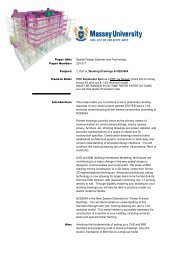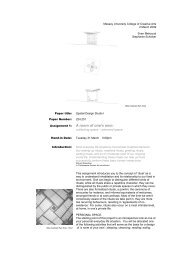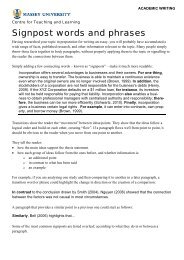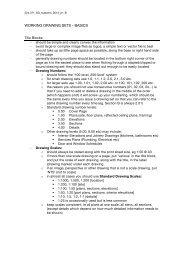rethinking design - Spatial Design@Massey
rethinking design - Spatial Design@Massey
rethinking design - Spatial Design@Massey
Create successful ePaper yourself
Turn your PDF publications into a flip-book with our unique Google optimized e-Paper software.
ethinking <strong>design</strong>Tenkei melons mimic they way a vine grows naturally up a tree or other solid naturalobject in a forest situation. The process of growing the melons is very labour intensive, as itrequires daily pruning of the plant and restricting the fruiting capacity of the plant, so that onlythe perfect fruit are selected at an early stage of their development. This means that the fruitat harvest time will be of a predetermined size and of aperfect shape, resulting in the potential to market everyfruit produced with the maximum amount of return persquare meter, compared to growing ʻtraditionallyʼ outside.When growing outside along the ground there is thepossibility of more insect and disease problems, thiscauses damage to the fruit and the fruit not looking asʻcleanʼ with marks where it sits on the ground resulting ina less appealing end product, which would downgrade the fruit to a lower value.As Tenkei melons greatly benefit from growing in greenhouses, it is also possible togrow them in other external or internal spaces. Because a lot of care is needed when growingthem it provides the opportunity to make the melons truly organic, which in turn heightenstheir price and value. It also really emphasises the sustainability of this vertical crop.RETHINKING DESIGNSFor urban environments all over the world, as well as rural communities and people indiverse living situations, there is a big demand for organic, sustainable food sources. UrbanAquaponics and Tall Tenkeis are two examples of food that have been adapted to cope in allenvironments. These <strong>design</strong>s have provided the different communities with an opportunity forhealthy living.Urban AquaponicsThe process of aquaponics is a complicated but manageable one; it involves both fishand plants. The cycle that happens in aquaponics consists of fish by-products being pumpedinto growing beds filled with gravel. A balance occurs in the eco-system where water issufficiently filtered by the plants that in turn obtain all the necessary nutrients from the fish.This process is very economical for everyone as very little water is used and there is noeffluent to dispose of.


